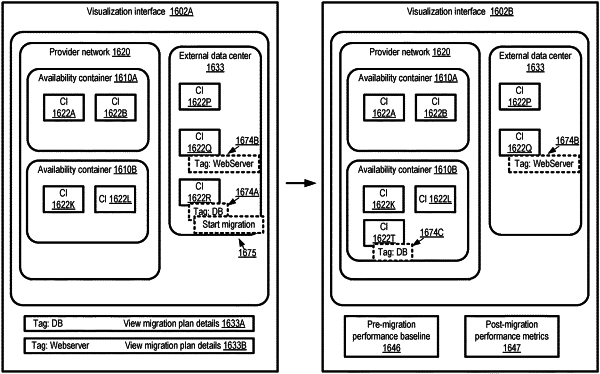| CPC H04L 41/0816 (2013.01) [G06F 9/4856 (2013.01); G06F 9/5072 (2013.01); H04L 41/0846 (2013.01); H04L 41/0889 (2013.01)] | 20 Claims |

|
1. A computer-implemented method, comprising:
discovering a first application component and a second application component of an application being executed at a first premise external to a cloud computing environment;
receiving, from one or more agents running on one or more hosts at the first premise, a data set indicating observed behaviors of the first and second application components including one or more observed processes and one or more network connections associated with the first and second application components;
detecting (a) a logical role of the first application component, (b) a logical role of the second application component, and (c) a dependency relationship between the first application component and the second application component, wherein the detecting is based on an automatic analysis of the observed behaviors of the first and second application components indicated in the data set, wherein the logical roles are selected from a set of roles of corresponding one or more servers on which the first and server application components execute;
sending graphical user interface data to present, via a graphical user interface, (a) a visualization of dependency relationships among components of the application including the dependency relationship between the first and second application components and the logical roles of the first and second application components detected from the observed behaviors, and (b) a migration plan to migrate the application from the first premise to the cloud computing environment, wherein presentation of the migration plan includes the logical roles of the first and second application components; and
in response to input received via the graphical user interface, causing the first and second application components to be migrated from the first premise to the cloud computing environment according to the migration plan.
|